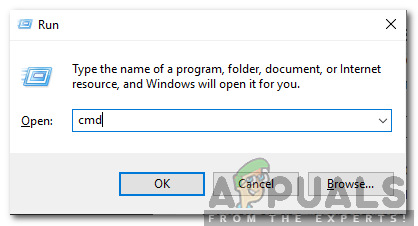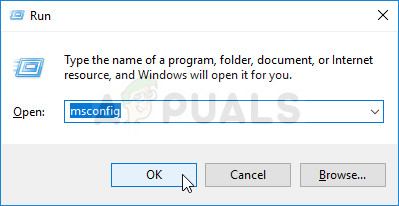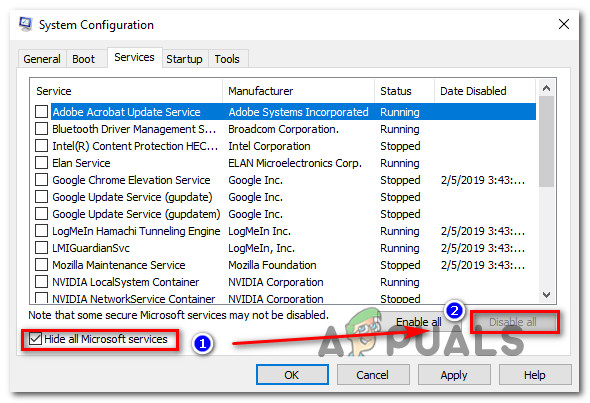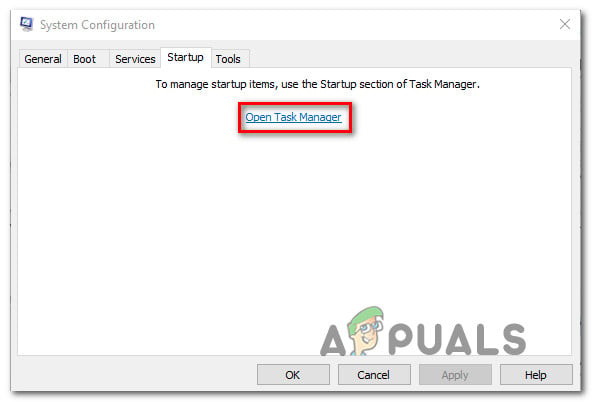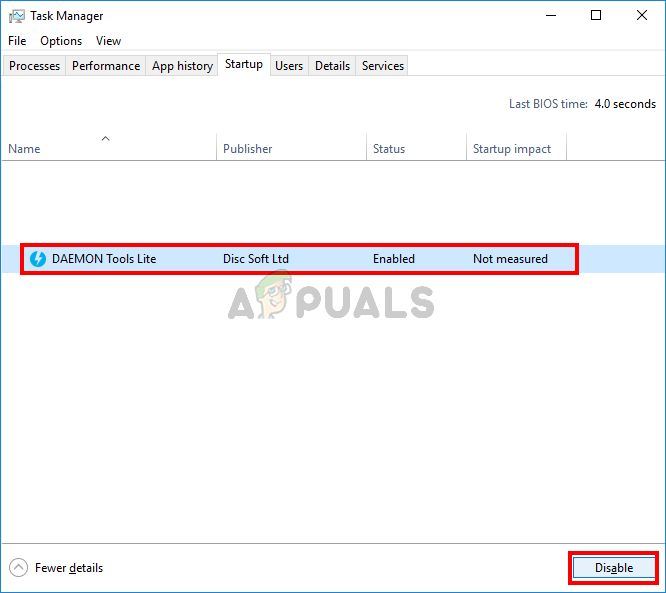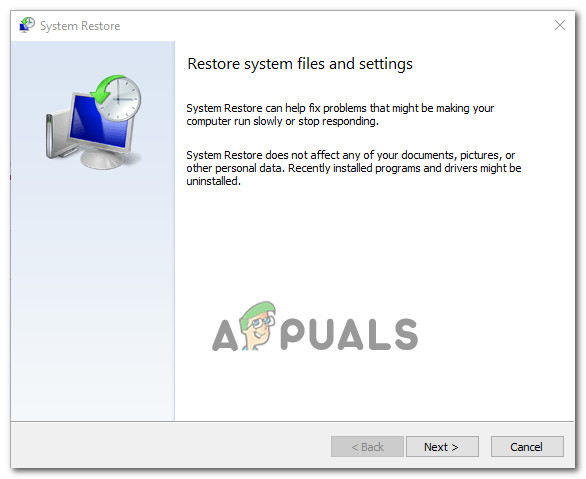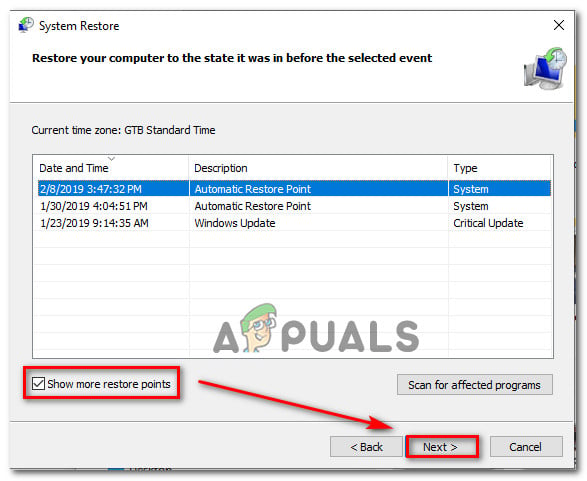What is causing the “Failure to Display Security and shut down options” issue?
We investigated this particular issue by looking at various user reports and the repair strategies that are commonly being used to fix this particular problem. As it turns out, there are several different potential culprits that might end up causing this particular error: If you’re currently struggling to resolve the very same “Failure to Display Security and shut down options” error, this article will provide you with several different troubleshooting guides. Down below, you’ll find a collection of methods that other users in a similar situation have successfully used to resolve this particular error message. If you want to remain as efficient as possible, we advise you to follow the potential fixes in the order that they are presented since we ordered them by efficiency and severity. Eventually, you should stumble upon a method that resolves your problem regardless of the culprit that’s causing it. Let’s begin!
Method 1: Doing an SFC and DISM scans
As it turns out, the most common problem that will cause the “Failure to Display Security and shut down options” error is system file corruption. In most cases, the error appears because a file (NTUSER.DAT) becomes corrupted and ends up breaking the login process, which in turn will trigger this error message. Several affected users that found themselves in a similar situation have reported that they managed to resolve the issue by running scans with a series of built-in utilities capable of fixing system file corruption automatically. Both SFC (System File Checker) and DISM (Deployment Image Servicing and Management) are two built-in utilities that have features capable of fixing corrupted Windows files. However, their approach is different. While SFC scans for corrupted files and replaces any corrupted file with fresh copies from a locally stored folder, DISM relies on WU (Windows Update) to download fresh copies for the corrupted files that are identified by the initial scan. Since the two procedures somewhat complement each other, we advise you to perform both scans in order to ensure that any sort of system file corruption is resolved. Here’s a quick guide on running an SFC and DISM scan from an elevated Command Prompt: If the same “Failure to Display Security and shut down options” error is still occurring, move down to the next method below.
Method 2: Doing a Winsock reset in Safe Mode
As it turns out, this particular issue can also occur due to some kind of inconsistency with your current network configuration. Several affected users have reported that they manage to resolve the issue by forcing the computer to boot up in Safe Mode (with Networking) and then resetting the Windows Sockets (Winsock) in order to fix any network issue that might be causing this issue. This method has been confirmed to be effective on both Windows 7 and Windows 10 with users that have been encountering this problem. Here’s a quick guide on booting your computer up in Safe Mode (with Networking) and doing a Winsock reset from an elevated CMD window: If you’re still encountering the “Failure to Display Security and shut down options” error, move down to the next method below.
Method 3: Performing a Clean Boot
As it turns out, this particular issue can also occur due to some type of application conflict with the login service. several affected users have managed to successfully confirm their suspicions by performing a clean boot. If the issue doesn’t appear while the computer is started in a clean boot state, it’s clear that one of 3rd party application or service is causing the issue. In this case, you’ll need to take the necessary steps to identify and isolate the service or application responsible for the issue. Here’s a quick guide on performing a clean boot in order to resolve the “Failure to Display Security and shut down options” error: If this scenario was not applicable to your situation or it didn’t allow to resolve the issue, move down to the next method below.
Method 4: Uninstalling Vipre Internet Security (or similar app)
As it turns out, an overprotective security suite can also be responsible for the “Failure to Display Security and shut down options” error. Vipre Internet Security is an application that is commonly reported for causing this error. NOTE: We only managed to identify Vipre Internet Security as a potential cause for this issue, but there might be other similar security suites that will facilitate the same kind of conflict. If this scenario is applicable and you’re using a security suite capable of creating this error, follow the steps below to resolve the conflict by uninstalling the application that is causing the issue: If the same error message is still appearing, move down to the next method below.
Method 5: Performing a system restore
If the issue only started to occur recently and you were previously able to press Ctrl + Alt + Delete without seeing the “Failure to Display Security and shut down options” error, it’s very likely that a recent system change ended up creating the problem. In this case, the cleanest method of resolving the issue is to use a system restore point dated before the apparition of the issue to return your computer to a healthy state. Here’s a quick guide on doing a system restore: If you’re still encountering the same “Failure to Display Security and shut down options” error, move down to the next method below.
Method 6: Performing a repair install
If you’ve come this far and none of the potential fixes have helped you to resolve the “Failure to Display Security and shut down options” error, it’s almost clear that your PC is suffering from an underlying system corruption problem. In cases like this, replacing the whole suite of Windows components is the only viable option. There are two ways of refreshing all Windows components – a clean install or a repair install. The first option (clean install) is more drastic since it means you’ll lose any personal data including applications, user preferences, media files, etc. If you want to take the focused approach, the correct way to refresh the Windows components is by doing a repair install. This procedure will allow you to refresh all Windows files and folders (including booting-related processes) without losing any personal data. You’ll be able to keep your applications, games and media files. Here’s a quick guide on performing repair install (here).
SOLVED: Windows 10 Update Failure Error Failure 80240020How to Use Shutdown Timer to Schedule Windows Shutdown Timings’Failure To Install’ Issue In Windows 10 Forces Microsoft To Releases Revised…Windows 10 20H1 2004 Blocked By Windows Security App? Here’s A Solution To…



